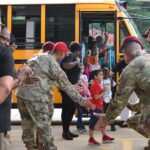The traditional methods of teaching are being increasingly complemented, and sometimes replaced, by innovative approaches that focus on student centered learning. This shift aims to engage students more deeply by tailoring learning experiences to their individual needs and interests. Gone are the days when learning was confined to textbooks; today, learning beyond books is not just a trend but a necessity for fostering well-rounded, lifelong learners.
The Need for Student Centered Learning

Traditional education often emphasizes a one-size-fits-all approach, which can overlook the diverse needs and potentials of students. In contrast, student centered learning puts students at the heart of the educational process. This approach encourages active participation, critical thinking, and real-world problem-solving skills. According to a study by the National Research Council, student centered learning environments can significantly enhance student engagement and achievement by catering to their unique learning styles and interests.
Innovative Strategies for Learning Beyond Books
To truly embrace student centered learning, educators and parents must explore strategies that extend beyond traditional textbooks. Here are some innovative approaches:
Project-Based Learning (PBL)
Project-Based Learning (PBL) is a modern and varied classroom approach in which students actively tackle real-world problems and challenges. This method promotes deeper understanding and retention of knowledge by engaging students in meaningful projects. For instance, instead of reading about environmental science from a textbook, students might create a sustainable garden or develop a recycling program for their school. Studies have shown that students involved in PBL score up to 25% higher on content knowledge tests compared to their peers in traditional learning settings.
Technology-Enhanced Learning
The integration of technology in education has revolutionized student centered learning activities. Tools like interactive whiteboards, tablets, and educational software provide students with interactive and personalized learning experiences. For example, platforms like Google Classroom facilitate collaborative learning. According to the Pew Research Center, 73% of Advanced Placement and National Writing Project teachers report that digital tools encourage student creativity and engagement.
Enhancing Student-Centered Learning Activities
Implementing student centered learning activities requires thoughtful planning and a willingness to adapt. Here are some strategies to enhance these activities effectively:
Collaborative Learning
Encouraging collaboration among students can significantly boost their engagement and learning outcomes. Group projects, peer reviews, and discussion forums enable students to learn from one another and develop critical social skills. A report by the National Education Association highlights that collaborative learning leads to higher student achievement and increased motivation.
Experiential Learning
Experiential learning involves learning through experience and is a cornerstone of student-centered education. This approach can include internships, field trips, and hands-on experiments. For example, a biology class might visit a local ecosystem to study plant and animal life firsthand, thereby gaining a deeper understanding than they could from a textbook alone. The Association for Experiential Education notes that students involved in experiential learning demonstrate improved problem-solving skills and greater retention of information.
Personalized Learning Plans
Personalized learning plans tailor education to each student’s strengths, needs, and interests. These plans can include setting individual goals, choosing learning activities that align with personal interests, and using assessments that measure growth rather than just proficiency. According to the Bill & Melinda Gates Foundation, personalized learning can result in significant academic gains, particularly for low-income students.
The Role of Parents in Promoting Learning Beyond Books
Parents play a crucial role in supporting and promoting learning beyond books. Here are some ways parents can foster a student centered learning environment at home:
Encourage Curiosity and Exploration
Parents can nurture their children’s natural curiosity by encouraging them to ask questions and explore new interests. Providing access to diverse resources such as books, educational games, and science kits can stimulate a love for learning.
Create a Learning-Friendly Environment
A conducive learning environment at home is essential for student centered learning. This includes a quiet, organized space for study, as well as access to necessary materials and technology. Ensuring that children have a balanced routine with time for study, play, and rest is also important.
Engage in Learning Activities Together
Parents can engage in student centered learning activities with their children, such as visiting museums, attending workshops, or participating in community service projects. These activities not only enhance learning but also strengthen the parent-child relationship.
Conclusion
As the educational landscape continues to evolve, embracing student centered learning beyond books is crucial for developing well-rounded, motivated learners. By implementing innovative strategies such as project-based learning, technology-enhanced learning, and personalized learning plans, educators and parents can create engaging, effective learning experiences. With active parental involvement and a commitment to fostering curiosity and exploration, we can ensure that our children are equipped with the skills and knowledge they need to thrive in an increasingly complex world.
Incorporating these approaches and prioritizing student centered learning activities not only enhances academic performance but also prepares students for lifelong success. As we move forward, let’s continue to break the mold and embrace learning beyond books, ensuring that education remains a dynamic, enriching experience for all students.






Leave a Reply
You must be logged in to post a comment.